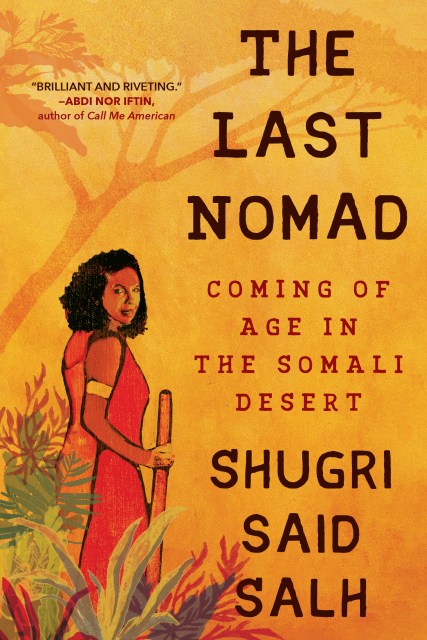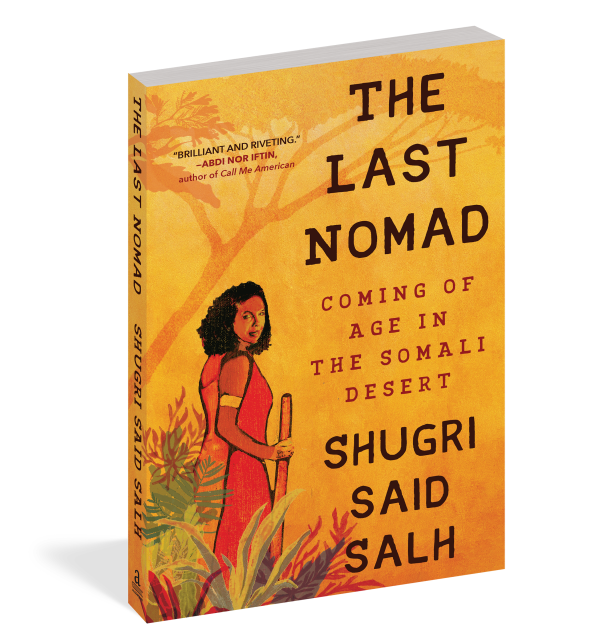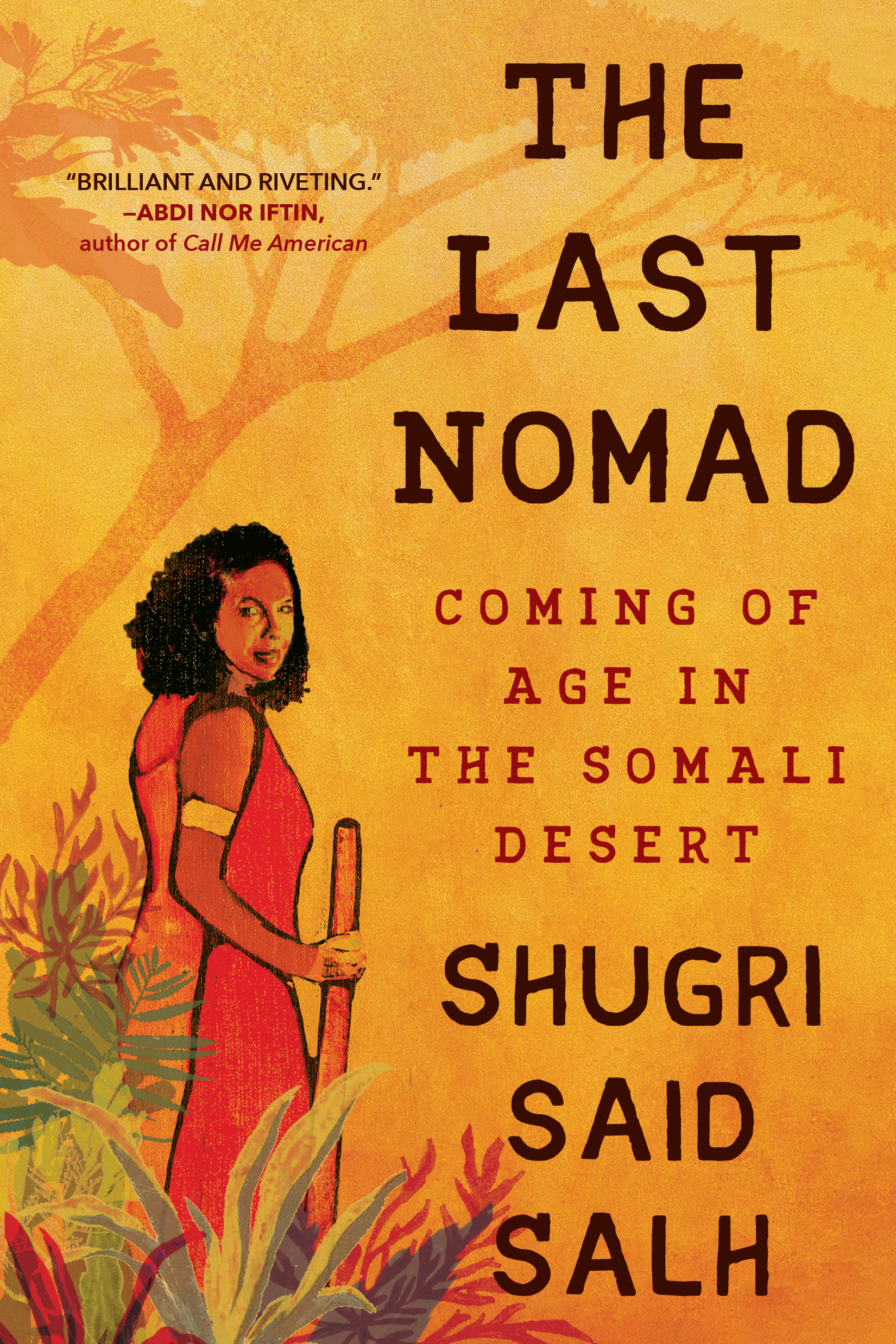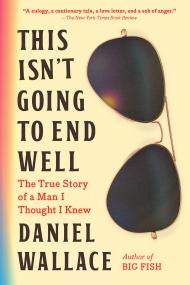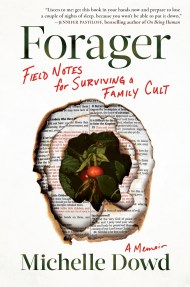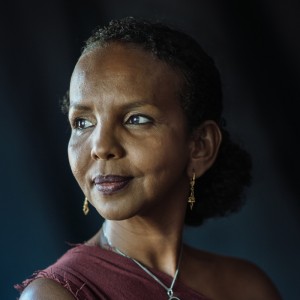Promotion
25% off sitewide. Make sure to order by 11:59am, 12/12 for holiday delivery! Code BEST25 automatically applied at checkout!
By clicking “Accept,” you agree to the use of cookies and similar technologies on your device as set forth in our Cookie Policy and our Privacy Policy. Please note that certain cookies are essential for this website to function properly and do not require user consent to be deployed.
The Last Nomad
Coming of Age in the Somali Desert
Contributors
Formats and Prices
- On Sale
- Jul 19, 2022
- Page Count
- 320 pages
- Publisher
- Algonquin Books
- ISBN-13
- 9781643752563
Price
$19.99Price
$25.99 CADFormat
Format:
- Trade Paperback $19.99 $25.99 CAD
- ebook $11.99 $15.99 CAD
- Audiobook Download (Unabridged) $27.99
This item is a preorder. Your payment method will be charged immediately, and the product is expected to ship on or around July 19, 2022. This date is subject to change due to shipping delays beyond our control.
Buy from Other Retailers:
Finalist for the 2022 Dayton Literary Peace Prize Nonfiction Award
Winner of the 2022 Gold Nautilus Award, Multicultural & Indigenous Category
Born in Somalia, a spare daughter in a large family, Shugri Said Salh was sent at age six to live with her nomadic grandmother in the desert. The last of her family to learn this once-common way of life, Salh found herself chasing warthogs, climbing termite hills, herding goats, and moving constantly in search of water and grazing lands with her nomadic family. For Salh, though the desert was a harsh place threatened by drought, predators, and enemy clans, it also held beauty, innovation, centuries of tradition, and a way for a young Sufi girl to learn courage and independence from a fearless group of relatives. Salh grew to love the freedom of roaming with her animals and the powerful feeling of community found in nomadic rituals and the oral storytelling of her ancestors.
As she came of age, though, both she and her beloved Somalia were forced to confront change, violence, and instability. Salh writes with engaging frankness and a fierce feminism of trying to break free of the patriarchal beliefs of her culture, of her forced female genital mutilation, of the loss of her mother, and of her growing need for independence. Taken from the desert by her strict father and then displaced along with millions of others by the Somali Civil War, Salh fled first to a refugee camp on the Kenyan border and ultimately to North America to learn yet another way of life.
Readers will fall in love with Salh on the page as she tells her inspiring story about leaving Africa, learning English, finding love, and embracing a new horizon for herself and her family. Honest and tender, The Last Nomad is a riveting coming-of-age story of resilience, survival, and the shifting definitions of home.
-
Winner of the 2022 Gold Nautilus Award, Multicultural Indigenous CategoryA Mighty Girl, 2021 Mighty Women Reading List for Adults Pick
Finalist for the CALIBA/Golden Poppy Award, Martin Cruz Smith Diversity Category
An Apple Best Book of the Month, August 2021
An Amazon Best Book of the Month, Biographies Memoirs, August 2021
“Salh’s prose radiates with deep empathy and sensitivity, a reflection of the gift for storytelling she inherited from her poet grandmother. This stuns with its raw beauty.”
I>Publishers Weekly
“A brilliant and riveting book . . . The Last Nomad introduces the reader to the real lives in Somalia and the resilience of its people not only inside the nation but beyond.”
—Abdi Nor Iftin, author of Call Me American
“Shugri Salh's The Last Nomad is a fascinating look at a disappearing culture. It's told from the perspective of a girl growing into womanhood in a place where women's value and virtue hinges on the actions of men. Salh's stories of bravery and resilience intersplice with those of everyday joy and struggle. They show her forever navigating the place where two worlds collide with grace and skill, as perhaps only a nomad can.”
—Tracey Baptiste, author of The Jumbies and African Icons: Ten People Who Shaped History
“Stunning . . . A clear-eyed, richly-remembered memoir that takes its readers on the journey of a lifetime.”
I>KQED
“An illuminating and engaging read . . . [Salh] offers an important perspective, carefully documenting her experiences and how they reflect geopolitical issues . . . A thoughtful and resonant celebration of the human spirit.”
I>Booklist
“[A] beautifully written memoir . . . Salh’s memoir is a tale of both physical danger and family warmth and traditions, both nomadic and urban. She brilliantly takes the reader along with her, whether that is in the desert tending her herd or in the city, protecting her family . . . A memoir that demonstrates the power of a young woman to adapt to many difficult changes in life, by an author who was truly inspired by the strength and power of women in her own family.”
I>Library Journal (starred review)
“A clear-eyed and moving chronicle of her coming-of-age during a tumultuous time in the history of her native Somalia . . . A thoughtful look at life in an often-misunderstood culture and region.”
I>Kirkus Reviews
“An intense, compassionate, and moving story of tradition and resilience.”
I>Book Riot
“The prose is simple and open, and captivating. Shugri’s voice calmly teaches us about a stunning world most Americans are unfamiliar with, and the struggles of immigrating.”
I>Napa Valley Register, Elayna Trucker
“Salh shares her incredible journey across cultures and continents . . . She writes with reverence of her desert upbringing, under the wing of her grandmother, in a world of savage beauty, poetry, and storytelling. She also reflects with clear-eyed honesty on the plight of women in a repressive culture and the cruelties she witnessed in a homeland she describes as riven by clan warfare.”
I>Sonoma Magazine
“An absorbing attempt to explain, through vivid recollection and compassion for her own personal traumas and triumphs, how it feels to have experienced two such dramatically divergent lives.
I>San Francisco Chronicle
“Shugri Said Salh has had a life few of us could ever imagine. From the age of six, she lived as a nomad on Somalia’s unforgiving, arid plains, herding goats under the gentle tutelage of her wise grandmother. Forced to flee with her family during the country’s early-’90s civil war, she lived in refugee camps before beginning a new life from scratch in North America. That quick summary makes The Last Nomad sound like a tragic read, but Salh’s intense focus on her connection to her family and her culture packs an inspiring emotional wallop. As a nurse, she’s crystal clear about why female genital mutilation is harmful to women. Yet her eye-opening description of undergoing it as a girl is filled with a surprisingly deep connection to her heritage. If you don’t know much about the lives of Somali women before starting The Last Nomad, knowing Salh’s story will make you want to learn more.”
—Apple Books, Best Book of the Month, August
“A natural storyteller, Shugri Said Salh was born in the Somali desert and has endured war, refugee camps, loss and oppressive traditions on her way to finding her home.”
I>Ms. magazine
“A unique story of an unusual life.”
I>Southern California News Group, Stuart Miller
“A triumph of storytelling that illuminates the nomadic culture . . . As a testimony to human resilience as well as a love letter to Somalia and its people, The Last Nomad delivers accessible insights. Salh’s hard-won wisdom endures in her sometimes painful, yet always riveting and entertaining book.”
I>BookBrowse
“Heartbreaking and soaringly inspirational . . . Gorgeous.”
I>Petaluma Argus-Courier
“The riveting and lyrical tale she tells is complex and reflects many angles of a patriarchal nomadic culture that is by turns oppressive and supportive, frightening and beautiful . . . Her storyteller’s voice infuses her memoir with a playful, poetic spirit.”
I>North Bay Bohemian
“Salh writes lyrically and with reverence about her upbringing… she recalls with clear-eyed honesty the casual cruelties she witnessed in a homeland riven by clan warfare and a native culture that, for all its rich traditions, is rooted in misogyny.”
I>Santa Rosa Press-Democrat
“A fascinating account of the life of a young girl growing up in a nomadic family in Somalia. Reading like a novel, the author provides an account of her life beginning when she was six years old and is sent to live with her nomadic grandmother in the desert. Filled with fascinating details of her culture, I was totally immersed in this amazing memoir.”
I>Bookreporter
“This effortlessly told story documents both a personal and national history of strife. Salh’s unforgettable memoir is about hardship, the ‘rhythm and rituals of nomadic life,’ and a victorious song at the end of personal and national trauma.”
I>Isele Magazine
“This stunning memoir is an exploration of identity, survival, and finding yourself wherever you are.”
Newsletter Signup
By clicking ‘Sign Up,’ I acknowledge that I have read and agree to Hachette Book Group’s Privacy Policy and Terms of Use
